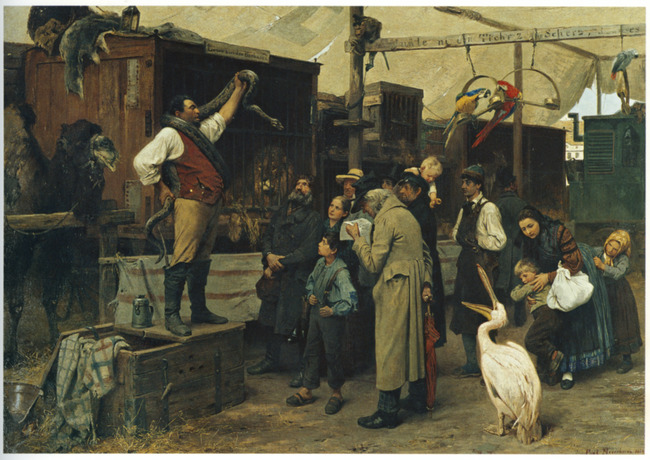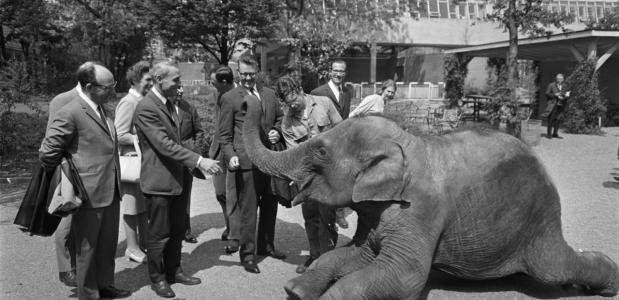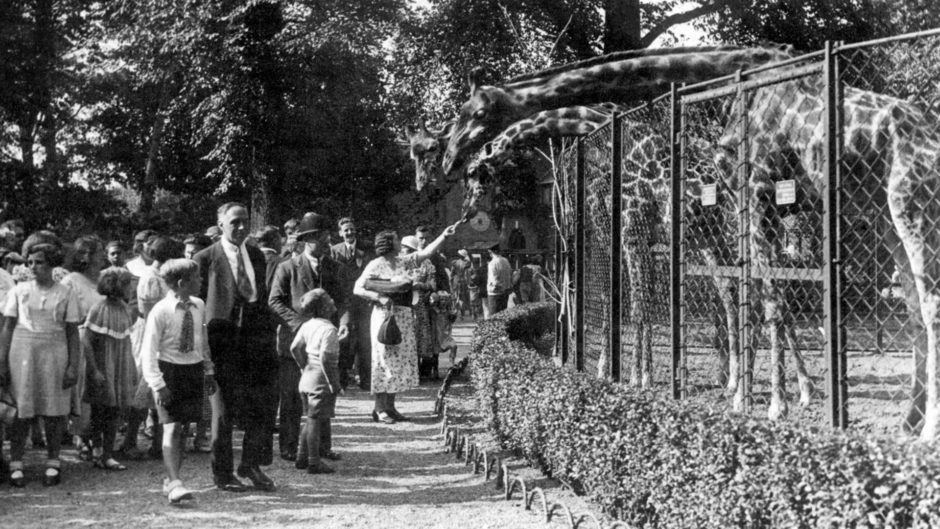Artis in Amsterdam. Anyone who has been here once knows: this is one of the most beautiful zoos in the Netherlands. Ever since its foundation in 1838, people have been coming here to enjoy each other. From the waddling penguins on the Penguin Island, the enormous wingspan of vultures in the Vulture Aviary to the envious monkeys on the Monkey Rock and the tropical fish in the Aquarium. Artists also know how to find their way to Artis.
Before the Zoological Society Natura Artis Magistra, later called Artis for short, zoos were mainly private property. Special and exotic animals were brought together, as were collections of special flowers, trees, fruits, rare minerals or shells. These animal collections were regularly accessible to a select group. Artis was also initially only intended for the group of wealthier residents of the city. One had to become a member of the society to be able to visit the zoo and this was a considerable amount for that time. The aim of the garden was to promote knowledge of natural history, but in addition to admiring the animals, people also came to stroll. And concerts and lectures were held.
In the beginning, the Society owned only a few monkeys, deer and parrots, supplemented by a collection of stuffed animals. In 1839, the entire menagerie of fair operator Cornelis van Aken was purchased for 34,000 guilders. This must consist of an elephant, lions, a panther, a tiger, a puma, hyenas, polar bears, brown bears, a zebra, llama, a kangaroo, a wildebeest, monkeys and a boa constrictor. With that, exotic animals entered the zoo. It must have been spectacular. Donations and cooperation from travelers to exotic countries, mostly members of the Society, were asked to expand the collection. The Dutch sent donations from the colonies, and captains who sailed between the Netherlands and the colonies were also found willing to take animals and take care of them on the way.

P.F. Meyerheim, De menagerie van Hermann van Aken, 1864 (location unknown)
From 1851 it was also possible for non-members to visit Artis, albeit only in the month of September, and gradually artists discovered the zoo. Already around 1870, August Allebé, teacher and later director of the Amsterdam Rijksacademie, takes his students to the garden for practical lessons in drawing or modeling. To study animal anatomy, the professor does not hesitate to bring the camels to the garden of the school. He can also often be found in Artis himself to sketch and paint. He transfers his love for animals to Lambertus Zijl.
Lambertus Zijl, like his Amsterdam friend Joseph Mendes da Costa, was one of the first sculptors who focused on animal plastic and found his inspiration in Artis. Zijl started it in the 90s. His modeling, building his images into the desired attitude and expression, is clearly visible in the final result and plays a part in the appreciation for his work. Zijl’s biographer De Vries jr. Wrote about it: ‘If we consider (…) Zijl’s free figurines, his small bronze child and animal figures, we notice that sometimes they have no eye, a smudge instead of a nose (…) and yet … we see the beauty. That elephant is an elephant, has everything that is elephant (…), the bison a bison’. Theo van Hoytema from The Hague was also often found in Artis between 1888 and 1915, which resulted in a large number of drawings of birds and plants.

Olifant in Artis

Giraffen kijken in Artis
A separate group of artists was fascinated by the large predators. One of them was Jan van Essen. After trying a lot of landscapes and portraits, he met the English lion painter and sculptor John Macallan Swan in Amsterdam. He advised him to concentrate on the animal genre and from then on he went to Artis almost every day. He must even have had a studio there. New was that he did not depict the lions and tigers in a fantasized, natural environment, as was often customary, but as they actually presented themselves in Artis, their posture, their coat and build. This resulted in special character watercolors. Among the Impressionists, he was considered one of the brightest animal painters, and almost all major collectors at home and abroad bought his work.
While most art students study on birds and predators, Gerrit Willem Dijsselhof spends his free hours in the wonderful world of the Aquarium. The Aquarium Building opened in 1882 is something special at the time. Never before has such a spectacle been seen in the Netherlands of so much color and movement of fish, crustaceans, aquatic plants and corals. The then 16-year-old artist looks and sketches, makes color notes and paints.
The born Amsterdammer Marinus Adrianus Koekkoek II (1873-1944) also had a special bond with Artis. In his early years this was the place where he went to draw animals. In 1909 the zoo asked him to make a series of paintings of animals in or near their enclosure. The zoo sells reproductions of these paintings as a postcard in the souvenir shop. This keeps the memory of the Artis visit alive.